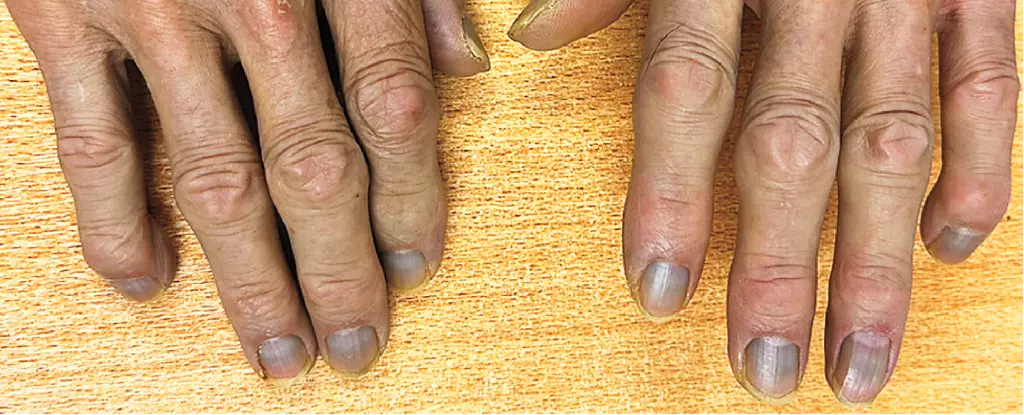In the rich tapestry of human health, stories of unusual medical phenomena often catch our attention, evoking both curiosity and concern. One such case is that of an 84-year-old man who presented to a Hong Kong hospital with a urinary flow obstruction. While clinicians expected the usual complications associated with aging, they were instead met with an unexpected and perplexing symptom – a grayish tint adorning his skin, eyes, and nails. This discoloration wasn’t an abrupt development but had subtly emerged over the past five years. Upon conducting blood tests, the medical team found the surprising cause of this peculiar hue: silver.
The condition known as argyria is characterized by a systemic accumulation of silver in the body’s tissues. It is rare but not unheard of, and it can have striking manifestations. In severe cases, individuals might display a dramatic blue or gray appearance that serves as a vivid reminder of the element’s toxic potential. The patient’s silver levels were alarmingly high, estimated at over 40 times the concentration typically found in the average person. This excess silver, although benign at lower levels, can lead to a range of health complications if allowed to accumulate unchecked.
Historically, argyria has predominantly affected individuals who worked directly with silver, such as miners and metalworkers. However, this case diverges from the norm, prompting questions about how such a high concentration of silver could exist in someone with no apparent occupational exposure. As the medical investigation unfolded, it became evident that this man’s condition might be linked to the increasing prevalence of colloidal silver in various products marketed for health benefits.
Colloidal silver has garnered attention for its purported health benefits, despite lacking robust scientific evidence to substantiate these claims. The U.S. Food and Drug Administration (FDA) has consistently warned against the unsupervised use of silver-based products, categorizing them as unsafe and ineffective for treating medical conditions. Still, the allure of natural remedies continues to fuel the market for these products, often marketed as dietary supplements aimed at detoxification or bolstering the immune system.
The absorption of silver particles can occur through various routes, including inhalation, dermal contact, and ingestion. The silver ions, once inside the body, can penetrate tissues and interact with sunlight, resulting in the characteristic gray discoloration associated with argyria. This raises important questions about consumer awareness and the potential dangers of unregulated products.
Despite extensive investigation into the man’s past and present exposures, pinpointing the exact source of his silver contamination proved challenging. His long career as a waiter did not hint at any likelihood of exposure, nor did any environmental factors within his home suggest a connection. The absence of similar symptoms in his neighbors further complicated the search for answers. As many in the medical community recognize, argyria often remains a mystery, with the origins of silver buildup obscured by a lack of clear causative links.
While the aesthetic implications of his slate-gray skin pose a concern for the patient, the more significant takeaway for medical professionals relates to the broader implications of silver accumulation in the body. It is worth noting that the patient is unlikely to face severe long-term health risks associated with his condition. However, the potential for silver to interfere with the absorption of certain medications such as antibiotics and thyroid hormones warrants ongoing monitoring.
Unfortunately, once silver has been deposited within the body, there are currently no known treatments or procedures that will effectively eliminate it. For the man, this means he must learn to navigate life with a distinctive appearance that carries an air of medical curiosity.
The case of this 84-year-old man underscores the complexities of modern health and the importance of being informed about the substances we consume. With increasing popularity of alternative remedies and health supplements, it becomes critical for consumers to scrutinize the safety and efficacy of such products. Physicians, too, must remain vigilant in identifying and addressing cases like argyria—conditions that may not only distort physical appearance but also raise crucial questions about the intersection of health, environment, and consumer safety. As his physicians continue to monitor his silver levels, this case serves as a reminder of the intricate relations between exposure, health, and the human body’s response to persistent foreign elements.

